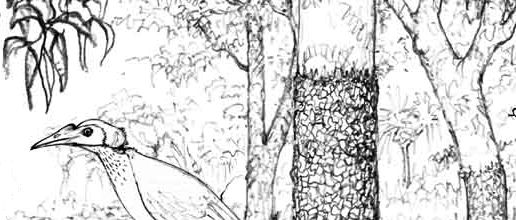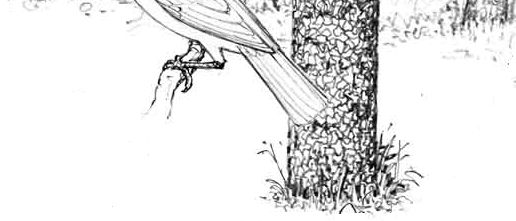Moreton Bay ash
Corymbia tessellaris
Family: Myrtaceae
The Moreton Bay ash is a common tree of the Magnetic Island lowlands and is mainly found on historic beach ridges and older high sandy creek banks. This tree can grow to be very large, sometimes to 30 m high. Such big trees overhanging the island's roads and buildings help to nestle the built landscape into the natural environment.
The Moreton Bay ash has narrow, lance or sickle-shaped leaves that hang down. The bark is a smooth powdery white or grey with a distinctive persistent stocking of dark brown to grey tessellated (forming small squares) bark from the ground to about 2 metres. In the late dry to early wet season (November-January), small cream flowers are produced in profusion, which are an abundant source of nectar for many insects, mammals and birds. The helmeted friarbird (Philemon buceroides) loves the nectar and, as a bonus, enjoys dining on the insects that feed on this nectar.
The native jasmine (Jasminum didymum), a strong woody climber, can be seen here using the nooks and crannies in the tessellated stocking of the Moreton Bay ash as support. Like the exotic jasmine used in horticulture, the native jasmine produces perfumed flowers with a similarly sweet aroma. Following the flower is a black, round berry, which is favoured by many fruit-eating birds.


Helmeted Friarbird (Philemon buceroides) & Moreton Bay ash (Corymbia tessellaris)
|